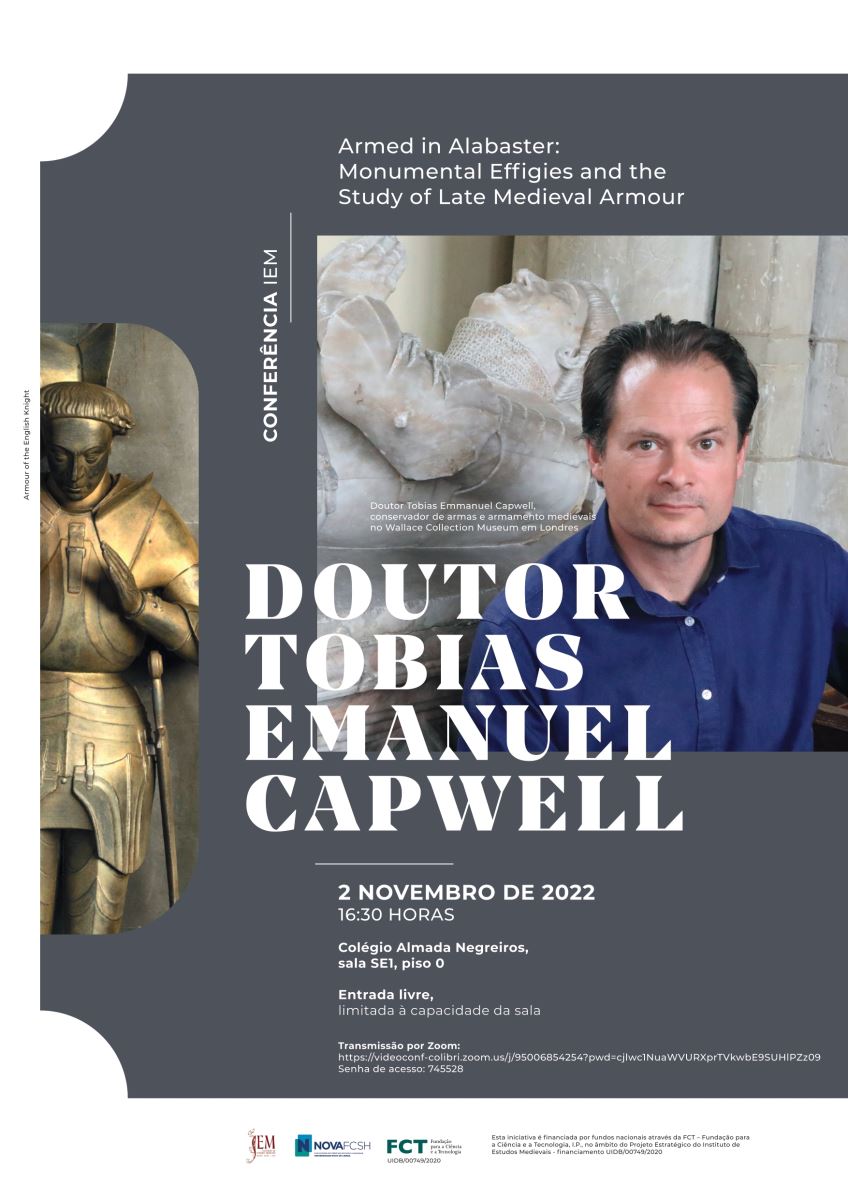IEM Conference “Armed in Alabaster: Monumental effigies and the Study of the late medieval armour” | Tobias Emanuel Capwell
02.11.2022 | 16:30
Sala SE1, Colégio Almada Negreiros, Lisbon

In this lecture Dr. Tobias Emanuel Capwell discusses this major research effort, tracing its progress, problems, methodology and results, while also considering the wider potential significance of what appears to be a highly specialised area of historical enquiry.
Advancements in our understanding of the iconic armour of the medieval knight are hard won victories. The greatest difficulty is the lack of ‘material’ evidence; surviving armours and pieces of armour dating from earlier than the sixteenth century are rare in the extreme, with some schools of armour-making now represented by not even one surviving artifact.
The work of English armourers is such a ‘black hole’ in the material record – not a single piece of armour made in England has been preserved to the present day. However, we know from the documentary evidence that an organised company of master armourers existed in London since the early fourteenth century, if not earlier; they worked for the royal household throughout the Hundred Years War, and were granted their royal charter by King Henry VI in 1456.
What then were they making? Was there a distinct style of English armour design? If so, how can it be described, both artistically and technically? How did it compare to armour made in the great continental centres of armour production, in Italy, Iberia, Germany, France, Flanders and elsewhere?
For the last twenty-three years, arms and armour curator and researcher Dr. Toby Capwell has been wrestling with these questions, and with the wider challenges of the available evidence. Employing diverse sculptural, pictorial and written sources, he has pieced together the story of the art of armour in late medieval England. His work has been published in Armour of the English Knight, a three-volume work already released in 2015 and 2021, with the final volume coming at the end of 2022.
